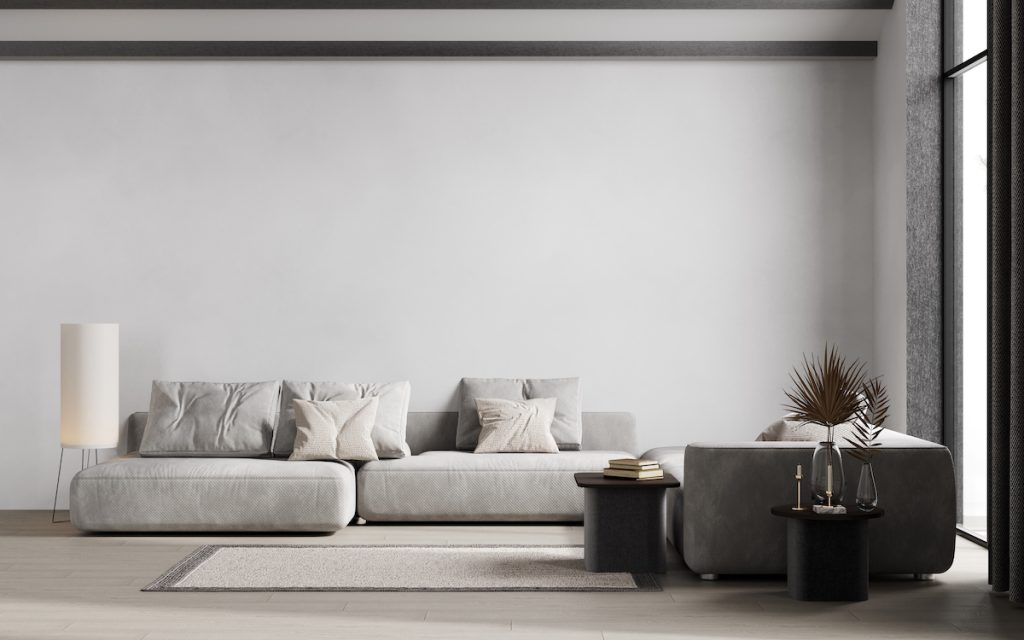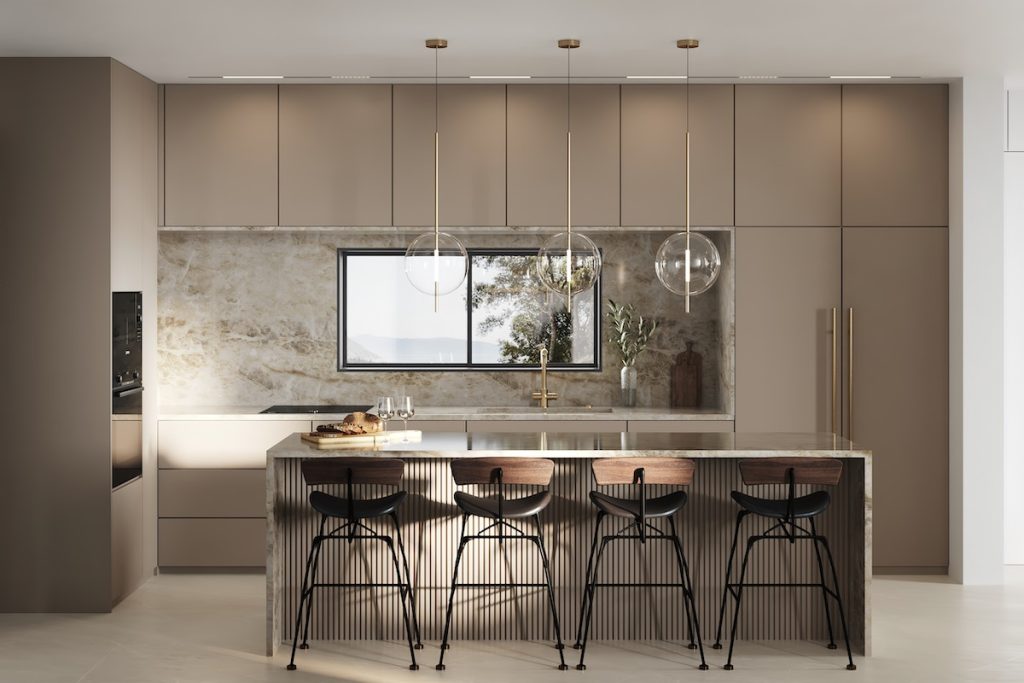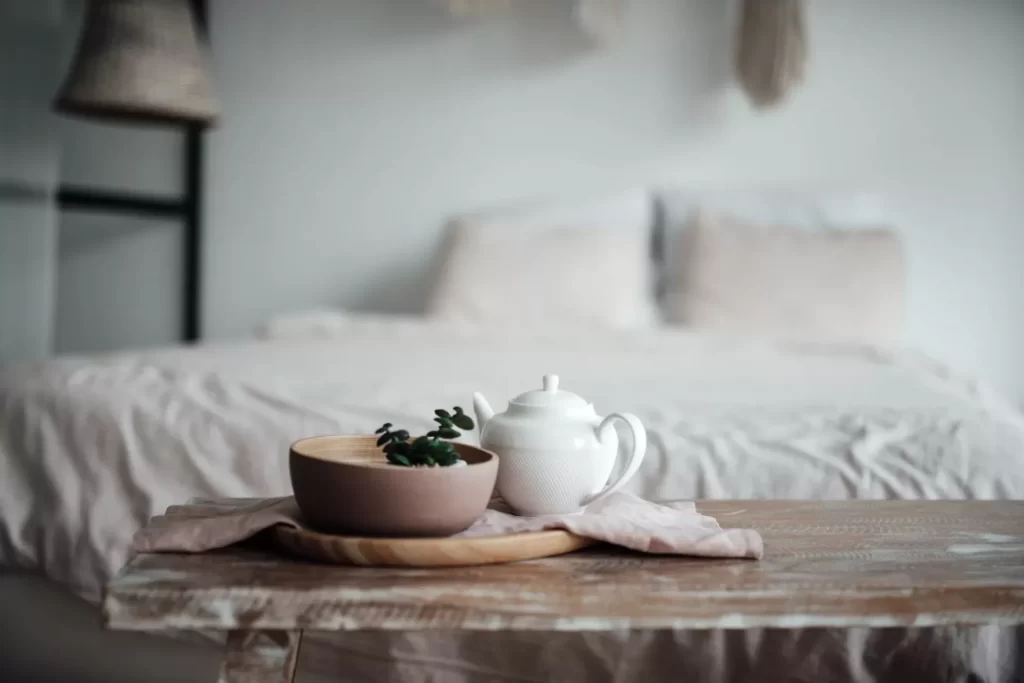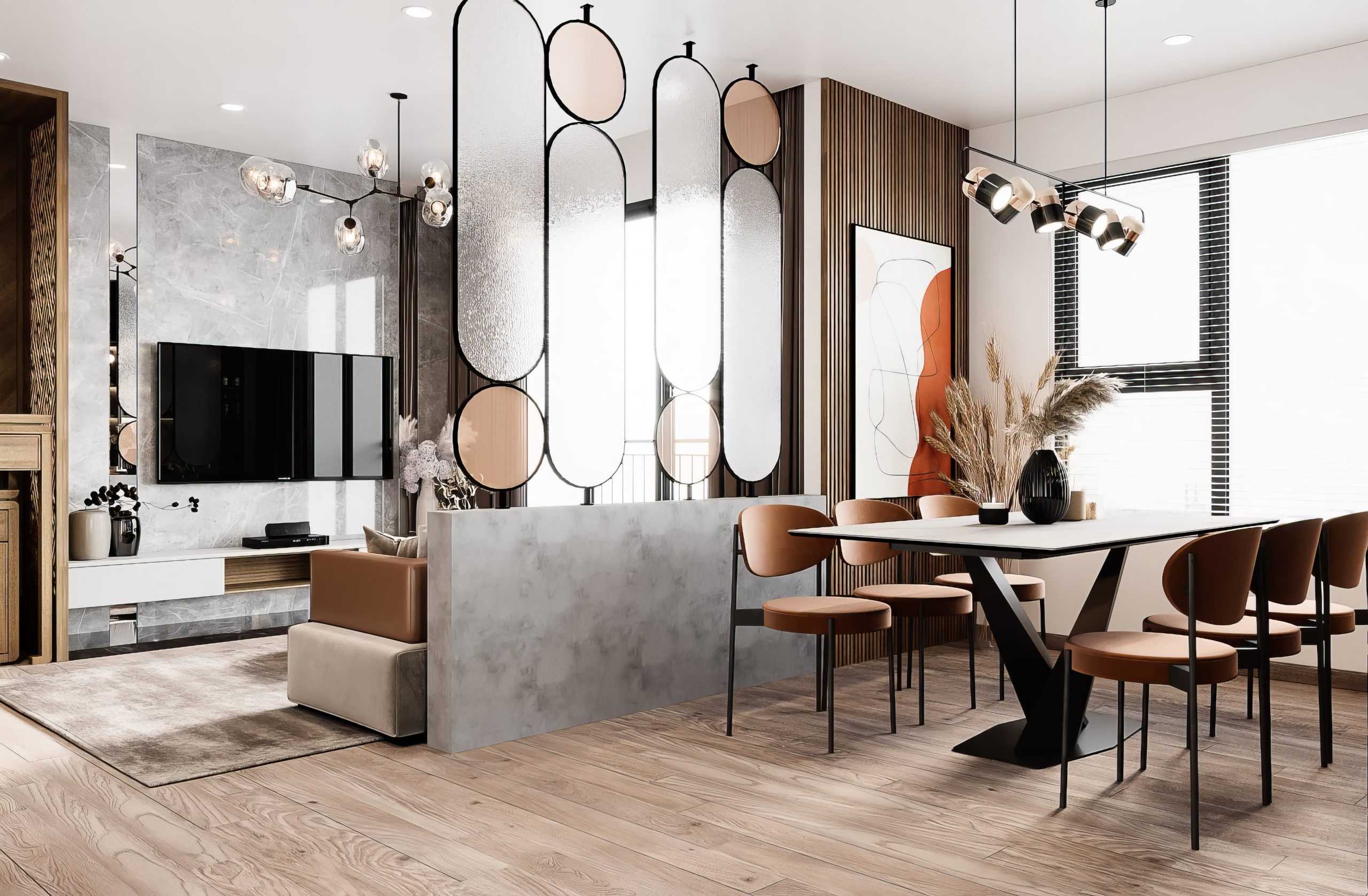DecorWorks showcases the latest trends and tips in home decor and interior design to inspire your best life. We curate architecture and design inspiration for global audiences, and show you practical tips to create any imaginable space.
What are Declutter Dates?
“Declutter dates” refer to specific dates or scheduled periods of time that you set aside to engage in decluttering and organizing your living space. These dates can be one-time events or recurring sessions, depending on your preference and the level of organization your space requires.
Declutter dates are essentially dedicated time slots during which you focus on sorting through your belongings, reorganizing your space, and making decisions about what to keep, donate, sell, or discard. By setting aside these specific times for decluttering, you ensure that the task doesn’t get neglected and your living environment remains organized and clutter-free.
Declutter dates can vary in frequency and duration based on your needs and schedule. They might include:
Weekly Decluttering Sessions: Setting aside a specific day or time each week to quickly go through different areas of your space and address any clutter that has accumulated.
Biweekly or Monthly Decluttering Sessions: Designating specific dates every two weeks or once a month for more in-depth decluttering sessions. These sessions might involve addressing specific zones or areas of your home.
Seasonal or Quarterly Decluttering: Scheduling larger decluttering sessions during different seasons or once every three months to evaluate your possessions and make adjustments according to changing needs.
Annual Deep Decluttering: Carrying out a comprehensive decluttering and organization overhaul once a year, when you thoroughly assess your belongings and make more significant decisions about what to keep, donate, or discard.
Special Occasion Decluttering: Using specific dates like birthdays, holidays, or the start of a new year to engage in decluttering as a way of freshening up your space and welcoming new experiences.
Declutter dates are a proactive approach to maintaining order and reducing stress in your living environment. When you make decluttering a regular part of your routine, you prevent clutter from accumulating, your space remains conducive, productivity, and a sense of tranquility.

The Transformative Power of Daily Decluttering
In the hustle and bustle of daily life, the practice of daily decluttering is a practical and effective way to create order, reduce stress, and enhance your overall well-being. Small decluttering routines in your everyday life can enhance the benefits of a clutter-free environment on a daily basis. Daily decluttering is a simple yet powerful practice that involves dedicating a small portion of each day to tidying up and organizing your living space. By consistently addressing clutter and maintaining order, you can prevent chaos from accumulating and enjoy the benefits of a serene environment.
Benefits of Daily Decluttering
1. Sustained Order: Small, consistent efforts each day prevent clutter from accumulating. Your space remains organized without requiring overwhelming cleanup sessions.
2. Streamlined Decision-Making: Frequent decluttering leads to quicker and more efficient decision-making about what to keep and what to let go of.
3. Heightened Productivity: An uncluttered space supports focus and productivity. You’ll be able to complete tasks without the distractions of clutter.
4. Reduced Stress: Daily decluttering promotes a stress-free environment by eliminating visual and mental clutter, contributing to a more relaxed mindset.
5. Mindful Consumption: Regular interaction with your belongings encourages you to be mindful of your consumption habits, leading to intentional choices.
6. Positive Mindset: A clutter-free space fosters a positive atmosphere, enhancing your overall well-being and promoting a sense of tranquility.
Strategies for Successful Daily Decluttering
1. Set a Time: Designate a specific time each day for decluttering. It could be a short slot in the morning, before bed, or during a break.
2. Focus on One Area: Each day, concentrate on decluttering one specific area. This prevents overwhelm and ensures that everything receives attention over time.
3. Quick Sorting: Rapidly sort items into categories like “keep,” “donate,” “sell,” and “discard.” Keep these categories accessible for easy decluttering.
4. Digital Cleanup: Extend the practice to your digital life. Delete unnecessary emails, organize files, and declutter your digital devices.
5. Clothing Reflection: Before getting dressed or at the end of the day, assess your clothing. This helps you decide if there’s anything you no longer need.
6. Mindful Acquisitions: Before bringing new items into your space, consider what you’re willing to let go of. This brings balance and prevents clutter.
7. Daily Reset: Dedicate a few minutes at the end of the day to reset your space. Put items back where they belong and prepare for the next day.
Daily decluttering is a transformative practice that empowers you to create and maintain an environment that nurtures your well-being and productivity. Proactive decluttering in your daily life, means choosing simplicity, intention, and harmony. Remember that daily decluttering is not just about tidying—it’s about cultivating a mindset that values order and appreciates the benefits of a clutter-free space. It’s time to celebrate the incremental progress and relish the tranquility that a well-organized environment brings to your life.

Weekly Decluttering
Weekly decluttering is the practice of dedicating time each week to tidy, reassess, and reorganize your living space. This proactive approach ensures that clutter doesn’t accumulate, leading to a consistently orderly and serene environment.
1. Continuous Order: Regular decluttering helps you maintain a clutter-free environment without feeling overwhelmed. Each week’s effort contributes to sustained order.
2. Efficient Decision-Making: Frequent decluttering reduces the time it takes to make decisions about what to keep and what to let go of. You become more adept at evaluating items.
3. Elevated Productivity: A neat and organized space enhances focus and productivity, allowing you to engage in tasks with greater efficiency.
4. Reduced Stress: Clutter contributes to stress and mental chaos. Weekly decluttering creates a visually calming environment that supports your well-being.
5. Mindful Consumption: Regularly engaging with your belongings encourages you to make mindful choices about what you acquire, leading to intentional consumption.
6. Positive Atmosphere: A clutter-free space fosters a positive atmosphere, lifting your spirits and promoting a sense of contentment.
Strategies for Effective Weekly Decluttering:
1. Designate a Day: Choose a specific day of the week for your decluttering session. Make it a consistent routine to ensure it becomes a habit.
2. Focus on Zones: Direct your attention to different zones or areas of your home each week. This systematic approach prevents feeling overwhelmed.
3. Clear Surfaces: Start by clearing surfaces like countertops and tables. Return items to their designated places to prevent clutter buildup.
4. Quick Sorting: During weekly decluttering, quickly sort items into categories like “keep,” “donate,” “sell,” and “discard.”
5. Digital Cleanup: Extend the practice to your digital life. Organize files, delete unnecessary documents, and tidy up your digital devices.
6. Clothing Tidying: Weekly decluttering is a great time to assess your clothing choices for the week. This also prevents laundry from accumulating.
7. Regular Maintenance: Dedicate a few minutes each day to maintaining order. Tidy up, put items away, and prevent clutter from building up.
8. Mindful Acquisitions: Be mindful of what you bring into your space during the week. Consider what you’re willing to let go of before acquiring something new.
Weekly decluttering is a transformative practice that empowers you to cultivate an environment of order, peace, and mindfulness. Remember that weekly decluttering is more than just a chore—it’s a commitment to a life that nurtures your well-being and allows you to thrive.

Monthly Decluttering
Monthly decluttering is a practice that involves setting aside time once a month to evaluate and reorganize your possessions so your living space remains functional and peaceful.
1. Consistent Order: Regular decluttering helps you stay on top of your possessions, preventing clutter from spiraling out of control. Your environment will be consistently neat and organized.
2. Efficient Decision-Making: Frequent decluttering reduces the emotional attachment to items, making it easier to decide what to keep, donate, or discard.
3. Heightened Productivity: An organized space enhances focus and productivity. With fewer distractions, you can tackle tasks with increased efficiency.
4. Reduced Stress: Clutter can contribute to stress and anxiety. Monthly decluttering creates a calming environment that supports your mental well-being.
5. Mindful Consumption: Regularly evaluating your belongings encourages you to be mindful of your purchasing habits, helping you make intentional choices.
6. Positive Mindset: A clutter-free space promotes a positive mindset, contributing to an overall sense of happiness and contentment.
Strategies for Successful Monthly Decluttering
1. Schedule Regularly: Choose a consistent day each month for your decluttering session. Mark it on your calendar to prioritize this important activity.
2. Focus on Areas: Direct your attention to different areas of your home each month. This approach ensures that every part of your space receives regular decluttering.
3. Sort with Intent: Divide items into categories such as “keep,” “donate,” “sell,” and “discard.” This systematic approach streamlines decision-making.
4. Minimalist Mindset: Adopt a minimalist perspective by assessing the value and joy each item brings to your life. If an item no longer serves a purpose, consider letting it go.
5. Digital Decluttering: Extend the practice to your digital life. Organize files, clear out your inbox, and delete unneeded apps or files.
6. Clothing Rotation: Regularly evaluate your wardrobe, considering the items you’ve worn in the past month. Donate or discard clothing that no longer resonates with you.
7. Sentimental Items: Handle sentimental items thoughtfully. Create a dedicated space to curate these items and ensure they don’t overwhelm your living areas.
8. Maintenance Routine: In between monthly sessions, dedicate a few minutes each week to tidying and organizing. This prevents clutter from accumulating.
Monthly decluttering is a transformative practice that empowers you to create and maintain an environment that nurtures your well-being and productivity. By dedicating time each month to assess and reorganize, you embrace simplicity and intentional living. Remember that monthly decluttering is more than just tidying—it’s a commitment to a harmonious and orderly lifestyle that supports your growth and happiness. As you embark on your monthly decluttering journey, relish the sense of accomplishment and the serenity that a clutter-free space brings.

Quarterly Decluttering
Quarterly decluttering is a practice that involves evaluating, reorganizing, and purging your possessions every three months. It’s a proactive approach to keeping your space clutter-free and ensuring that your living environment remains conducive to well-being and productivity.
1. Consistent Organization: Regular decluttering ensures that your space doesn’t become overwhelmed by unnecessary items. This consistency promotes an ongoing sense of organization and harmony.
2. Streamlined Decision-Making: Frequent decluttering makes it easier to make decisions about what to keep and what to let go of. It reduces the emotional attachment to items and facilitates faster choices.
3. Enhanced Focus: A clutter-free environment enhances your ability to concentrate and focus on tasks, allowing you to be more productive and efficient.
4. Reduced Stress: The sight of clutter can induce stress and anxiety. Quarterly decluttering helps alleviate these feelings by creating a visually calming space.
5. Mindful Consumption: Regular evaluation of your belongings encourages mindful consumption. You become more conscious of what you bring into your space, making intentional choices.
6. Promotes Well-Being: An organized and clutter-free space promotes a positive mindset, reducing mental clutter and contributing to a sense of well-being.
Steps for Effective Quarterly Decluttering
1. Set Dates: Schedule your quarterly decluttering sessions for the same dates each year. This routine ensures that decluttering becomes a natural part of your seasonal schedule.
2. Room Rotation: Focus on different rooms or areas each quarter. This approach prevents overwhelm and allows you to give thorough attention to each space.
3. Sort and Categorize: Divide items into categories such as “keep,” “donate,” “sell,” and “discard.” Having these categories makes decision-making easier.
4. Minimalism Mindset: Embrace a minimalist perspective by evaluating each item’s purpose and significance in your life. Ask yourself if it adds value or brings joy.
5. Digital Decluttering: Don’t neglect your digital space. Organize files, delete duplicates, and clean up your devices during your quarterly sessions.
6. Evaluate Wardrobe: As the seasons change, assess your clothing. Donate or discard items you haven’t worn in the past three months.
7. Sentimental Items: Address sentimental items with care. Select a designated space for these items and curate them thoughtfully.
8. Maintenance Routine: Between quarterly sessions, dedicate a few minutes each week to maintaining the organization of your space. This prevents clutter from accumulating.
Quarterly decluttering is a transformative practice that empowers you to reclaim control over your environment and mindset. By committing to regular sessions every three months, you cultivate a sense of order, mindfulness, and well-being in your life. As you embark on your quarterly decluttering journey, remember that it’s not just about tidying up—it’s about embracing intentional living, reducing stress, and creating a haven where you can thrive. With each quarterly session, you’ll discover the joy of simplicity and the beauty of an organized life.

Biannual Decluttering
Biannual decluttering is a practice that involves systematically evaluating and purging your belongings twice a year, typically in spring and fall. By committing to this process, you can keep your living space refreshed and your mind unburdened from the accumulation of unnecessary items.
1. Maintains Balance: Regular decluttering prevents your space from becoming overwhelmed with unnecessary items. This balance promotes a peaceful and calming atmosphere.
2. Enhances Productivity: A clutter-free environment fosters focus and productivity. With fewer distractions, you can accomplish tasks more efficiently.
3. Clears Mental Space: A cluttered physical space often leads to mental clutter. Biannual decluttering helps alleviate mental stress and encourages a clearer mindset.
4. Saves Time: A well-organized space reduces the time spent searching for items. You can easily find what you need, allowing for a smoother daily routine.
5. Encourages Mindful Consumption: Biannual decluttering prompts you to reflect on your purchasing habits. It encourages you to make intentional choices and value experiences over possessions.
6. Facilitates Positive Change: A decluttered space can be an inspiring canvas for personal growth and transformation. It encourages you to evaluate your goals and aspirations.
Strategies for Successful Biannual Decluttering
1. Commit to a Schedule: Set specific dates for your biannual decluttering sessions, such as the beginning of spring and fall. Mark these dates on your calendar to ensure you prioritize them.
2. Room-by-Room Approach: To prevent overwhelm, focus on decluttering one room at a time. This approach allows you to make steady progress.
3. Categorization:*Sort items into categories like “keep,” “donate,” “sell,” and “discard.” This system streamlines decision-making.
4. Minimalism Perspective: Embrace a minimalist mindset by focusing on items that add value and joy to your life. Consider Marie Kondo’s question: “Does it spark joy?”
5. Digital Decluttering: Don’t forget your digital space. Delete old files, organize your digital documents, and clean up your online presence.
6. Evaluate Clothing: Seasonal changes are an excellent time to assess your wardrobe. Donate or discard clothes you haven’t worn in the past six months.
7. Revisit Sentimental Items: While sentimentality is important, keep only items that truly hold deep meaning for you. Consider creating a designated space for sentimental items.
8. Maintenance Routine: Establish a regular maintenance routine between your biannual decluttering sessions. Dedicate a few minutes each day to tidying up.
Biannual decluttering is a transformative practice that goes beyond aesthetics; it’s a journey towards intentional living and personal growth. By regularly evaluating your belongings and maintaining a balanced space, you create an environment that supports your well-being and allows you to focus on what truly matters. As you embark on this journey, remember that biannual decluttering is about more than just tidying up—it’s about embracing simplicity, fostering mindfulness, and creating a sanctuary where you can flourish and thrive.

Yearly Decluttering
Yearly decluttering is the practice of reviewing, reassessing, and reducing your belongings at least once a year. It involves consciously letting go of items that no longer serve a purpose, evoke joy, or align with your current lifestyle.
1. Clears Physical and Mental Space: Physical clutter often leads to mental clutter. By removing unnecessary items, you create a more organized and calming environment, which can positively impact your mental state.
2. Enhances Productivity: A clutter-free space allows for greater focus and productivity. With fewer distractions, you can work, study, or pursue hobbies with improved efficiency.
3. Reduces Stress: The sight of clutter can be overwhelming and stressful. By decluttering, you create an environment that promotes relaxation and tranquility.
4. Encourages Mindful Consumption: Regular decluttering prompts you to reflect on your buying habits. It encourages you to make more intentional choices and only acquire items that truly add value to your life.
5. Facilitates Better Organization: When you have fewer items to manage, organizing becomes much easier. You’ll spend less time searching for things and more time enjoying what you have.
6. Promotes Generosity: Items you no longer need can find new life with others who might benefit from them. Donating or giving away items fosters a sense of goodwill and connection with your community.
Tips for Effective Yearly Decluttering
1. Set a Date: Choose a specific time each year for your decluttering session. Mark it on your calendar to ensure it doesn’t get postponed.
2. Take It Room by Room: Tackling your entire living space at once can be overwhelming. Instead, focus on one room or area at a time.
3. Sort Items: Create categories for items, such as “keep,” “donate,” “sell,” and “discard.” This helps you make decisions more efficiently.
4. The KonMari Approach: Embrace Marie Kondo’s philosophy of keeping items that “spark joy.” Hold each item in your hands and assess how it makes you feel.
5. Use a Timer: Set a timer for a specific amount of time (e.g., 30 minutes) to prevent burnout and make decluttering feel more manageable.
6. Limit Sentimentality: While sentimentality is important, it’s also essential to strike a balance. Keep items that truly hold special meaning and let go of those that are just clutter.
7. Digital Decluttering: Don’t forget to declutter your digital space as well. Delete old files, organize your inbox, and declutter your digital devices.
8. Regular Maintenance: In between yearly decluttering sessions, practice mindful acquisition. When you bring something new into your space, consider what you’ll let go of in return.
Yearly decluttering is a practice that goes beyond mere tidying up. It’s a journey toward intentional living, personal growth, and a more fulfilling lifestyle. By dedicating time to review your belongings, you create a space that supports your well-being, encourages mindfulness, and fosters a deeper appreciation for the things that truly matter. So, set aside a day on your calendar, gather your boxes, and embark on the transformative journey of yearly decluttering. Your space—and your mindset—will thank you.



 No products in the cart.
No products in the cart.